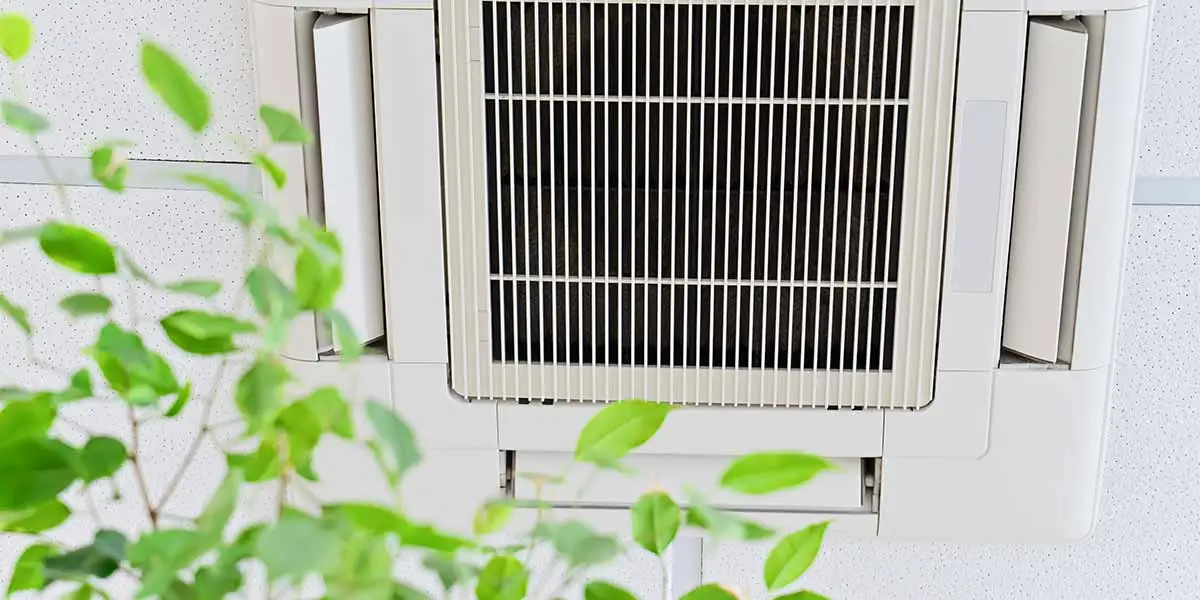
Jul 6, 2023
Blog Energy & Sustainability What’s causing the rise of the US indoor air quality market?
Air quality directly impacts people’s health and quality of life. During the Covid-19 pandemic, awareness of indoor air quality skyrocketed, leading to greater investments in the indoor air quality market – particularly in the US.
According to BCC Research’s estimates, the US value of the indoor air quality (IAQ) market is expected to reach heights of $11.9 billion by the end of 2027. The market is projected to grow at a compound annual growth rate (CAGR) of 4.1% during the forecast period. With air quality becoming an increasing priority for people far and wide, here’s everything you need to know.
US residents spend on average 90% of their time indoors, where some pollutants can be 2-5 times higher in concentration than outdoors. The top five air quality problems in the US are all indoor air problems, underscoring the severity of the issue. Mitigating indoor air pollution is essential, and achievable with the help of indoor air quality products.
Indoor air pollution is increasing. According to the American Lung Association data, in 2021, 40% of Americans nearly 137 million people live in places with degrading grades for unhealthy levels of particle pollution. Also, 2.1 million more people are breathing unhealthy air compared to 2020 data. The average annual PM2.5 concentration has been increasing in the U.S. in recent years, indicating a clear sign of increased air pollution. According to the data published by IQAir, PM2.5 concentrations have witnessed an increase of 7% compared to 2020.
Indoor air quality is vital to good public health. As awareness among the general population increases, the market will only increase in significance. BCC Research’s latest report dives into the US market, offering five-year forecasting, regional analysis, and an evaluation of the competitive landscape.
Damp, second-hand smoke, burning of fossil fuels, paint, building material radon and biological pollutants can all cause indoor pollution. As the risk of indoor air pollution climbs, products and services that help combat the issue are also in higher demand. Here are a few ways to combat poor air quality:
Given the danger poor indoor air quality poses to national health, the US Environmental Protection Agency has introduced indoor air quality standards and policies through its Indoor Air Quality Division. The regulations require users to abide by the regulations and policies for maintaining healthy environments in indoor spaces.
Government funding is also aiding the regulating bodies to introduce new policies and regulations for clean air for indoor applications. The EPA introduced the Clean Air in Buildings Challenge, wherein the EPA published a best practice guide for improving indoor air quality and reducing the risk of spreading dangerous airborne particles. In collaboration with the Department of Energy, the Centres for Disease Control and Prevention and other federal agencies, it contains a set of clear recommendations. The federal government provided funds to improve indoor air quality in schools, public buildings, colleges and universities, including $350 billion for state and local governments, as well as $122 billion for schools, through the American Rescue Plan. These federal investments are being put to work for enhancing HVAC systems and making other ventilation and filtration improvements.
The pandemic created a demand for IAQ products in 2020 and 2021, and forced the regulating bodies to introduce new policies and regulations to maintain healthy indoor environments. US residents have witnessed an increase in awareness of indoor air quality in a post-pandemic scenario, further supported by WHO guidelines for new air quality. The guidelines prescribed by the WHO for maintaining healthy air quality provide clear evidence of air pollution damaging human health. Stringent AQG levels in 2021 influenced the awareness of maintaining indoor air quality. The growing awareness among consumers concerning the environmental and healthcare implications of air pollution will therefore propel the demand for IAQ products, which helps to drive market growth throughout the forecast period.
Gain access to the full picture of the environmental industries. With membership to the BCC Research library, you gain unlimited access to the full catalogue of reports within your chosen category. Enquire today to find out more.

Olivia Lowden is a Junior Copywriter at BCC Research, writing content on everything from sustainability to fintech. Before beginning at BCC Research, she received a First-Class Master’s Degree in Creative Writing from the University of East Anglia.

Electrical switches—devices that control the flow of electricity—are the backbon...

As the world accelerates toward net-zero emissions, hydrogen, and ammonia have e...

Hydrogen technology is widely used across industries like glass, fertilizer, met...

We are your trusted research partner, providing actionable insights and custom consulting across life sciences, advanced materials, and technology. Allow BCC Research to nurture your smartest business decisions today, tomorrow, and beyond.
Contact UsBCC Research provides objective, unbiased measurement and assessment of market opportunities with detailed market research reports. Our experienced industry analysts assess growth opportunities, market sizing, technologies, applications, supply chains and companies with the singular goal of helping you make informed business decisions, free of noise and hype.